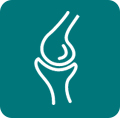Ayurveda herbo-mineral compounds containing Iron, Zinc, Silver Nanoparticles may offer answers to COVID-19 Pandemic
To date, there is no vaccine and no specific antiviral medicine to prevent or treat COVID-2019. The virus that causes COVID-19 and the one that caused the outbreak of Severe Acute Respiratory Syndrome (SARS) in 2003 are related to each other genetically, but the diseases they cause are quite different. In addition to dyspnea, hypoxemia, and acute respiratory distress, lymphopenia, and cytokine release syndrome are also important clinical features in patients with severe SARS-CoV-2 infection. This suggests that homeostasis of the immune system plays an important role in the development of COVID-19 pneumonia. Elevated exhaustion levels and reduced functional diversity of T cells in peripheral blood may predict severe progression in COVID-19 patients.
In a retrospective study the counts of total T cells, CD4+, CD8+ T cell subsets, and serum cytokine concentration from inpatient data of 522 patients with laboratory-confirmed COVID-19, admitted into two hospitals in Wuhan from December 2019 to January 2020, and 40 healthy controls, who came to the hospitals for routine physical examination. In addition, the expression of T cell exhaustion markers PD-1 and Tim-3 were measured by flow cytometry in the peripheral blood of 14 COVID-19 cases.
However, those affected should receive care to relieve symptoms. People with serious illness should be hospitalized. Most patients recover thanks to supportive care.
Novel Corona Virus affects humans in 3 strategies phases i.e., Entry, Replication, Release it can be summarized as
- The virus take entry to the host cell through cell receptor
- Makes it way towards the cytoplasm of the cell through the process of endocytosis
- The RNA component attaches to the ribosome for translation, later the viral genome is replicated using the resources of the host cell
- Progeny viruses are released by exocytosis
Possible vaccines and some specific drug treatments are under investigation. They are being tested through clinical trials. WHO is coordinating efforts to develop vaccines and medicines to prevent and treat COVID-19. Currently available anti-influenza drugs are often associated with limitations such as toxicity and the appearance of drug-resistant strains.
The most effective ways to protect yourself and others against COVID-19 are to frequently clean your hands, cover your cough with the bend of elbow or tissue, and maintain a distance of at least 1 meter (3 feet) from people who are coughing or sneezing.
In the wake of this pandemic there is unprecedented need for various approach to effectively control and or eradicate the pandemic; the main objective of any medicine will be to
- To inhibit the Cathepsin L in host cell endosomes & inhibition of TMPRSS2 in the plasma membrane.
- To effectively control dyspnea, hypoxemia, and acute respiratory distress, lymphopenia, and cytokine release syndrome
- Severe progression of COVID-19 may lead to Elevated exhaustion levels and reduced functional diversity of T cells in peripheral blood, thus revive the T cell production and effectiveness
- Simultaneous treatment of bronchial epithelia cells and serine and cystiene protease inhibition prevents severe acute respiratory syndrome.
Nanotechnology is one area which has promising results with various candidates found effective in controlling the viral disease in principle
- Iron oxide nanoparticles of about 10-15nm size was observed at 4.25 pg ± .2 pg, The percentage of plaque inhibition relative to the infection and the IC50 (50% virus reduction) and thus iron oxide NPs can be permissible candidate
- Zinc oxide nanoparticles (ZnO-NPs) are most promising non-toxic option for antiviral activity, At the highest non-toxic concentrations ZnO-NPs led to inhibition at the rate of 52.2% based on the viral loads.
- Silver nanoparticles of 10 nm size have demonstrated efficient inhibitory activities (virus-induced apoptosis) in Influenza A virus.
Drug development takes years thus promoting to use alternative system of medicines, it has to be noted that china used Traditional Chinese Medicine on at least 90% of COVID-19 patients. In India as well AYUSH systems play an important role in disease control and modifications and PMO has already recommended certain measures related to AYUSH system. However a detailed approach is the need of the hour. It is well known that Ayurveda uses mostly herbal origin medicines in its treatment; but use of bhasmas potentiates the actions of such herbal origin medicines.
The bhasmas are chemically Nanoparticles with high Zeta potential; which can carry the herbal origin molecules capped on them to the target tissues effectively.
- Abhraka bhasma - It is chemically Fe2O3 (Iron Oxide NP) Nanoparticles derived out of Mica, found very effective in various immuno-compromised conditions
- Yashada bhasma - ZnO3 (Zinc Oxide NP) Nanoparticles used in respiratory distress and immuno-compromised conditions
- Rajata Bhasma - AG NP Silver Nanoparticles of about 10nm size have been classically used in many fever related conditions for its antimicrobial activity.
- Kantaloha bhasma - Iron oxide NP which have high zeta potential, helps revive blood cell lines
These bhasmas are used in various formulations already in practice by Ayurveda doctors across the country
- Example 1: Mahalakshmivilasa predominantly contains Abhraka bhasma (Fe2O3 NP) functionalised with herbal components like Jatiphal, Karpoora etc. Very effective in both upper and lower respiratory conditions
- Example 2: Suvarnavasanta malati contains Yashada bhasma (ZnO3 NP) specifically prescribed for low immunity conditions
Thus it is recommend exploring herbo-mineral compounds containing Nanoparticles of Iron, Zinc, Silver to control the pandemic of COVID-19; due to absence of safe and tested vaccines/medicines.
About the Author: Dr Ravisha is an Ayurveda Medical Doctor from Bangalore, practicing Ayurveda for last the 10 years; he has worked in various medical care settings from chain of clinics to Ayurveda retreats as well as in pharma industry. Has the ability to bring the wisdom of Ayurveda to actionable protocols for the present day medical problems.
References
1.https://www.who.int/news-room/q-a-detail/q-a-coronaviruses
2. Simmons G, Zmora P, Gierer S, Heurich A, Pöhlmann S (December 2013). "Proteolytic activation of the SARS-coronavirus spike protein: cutting enzymes at the cutting edge of antiviral research". Antiviral Research. 100 (3): 605–14. doi:10.1016/j.antiviral.2013.09.028
3. Fehr AR, Perlman S (2015). Maier HJ, Bickerton E, Britton P (eds.). "Coronaviruses: an overview of their replication and pathogenesis". Methods in Molecular Biology. Springer. 1282: 1–23. doi:10.1007/978-1-4939-2438-7_1
4. Reduction and Functional Exhaustion of T Cells in Patients with Coronavirus Disease 2019 (COVID-19)DO- 10.1101/2020.02.18.20024364
5. Zheng, H., Zhang, M., Yang, C. et al. Elevated exhaustion levels and reduced functional diversity of T cells in peripheral blood may predict severe progression in COVID-19 patients. Cell Mol Immunol (2020). https://doi.org/10.1038/s41423-020-0401-3
6. Kumar et al, Iron oxide nanoparticles based antiviral activity of H1N1 influenza A virus.J Infect Chemother. 2019 May;25(5):325-329. doi: 10.1016/j.jiac.2018.12.006. Epub 2019 Feb 13.
7. Ghaffari H et al. Inhibition of H1N1 influenza virus infection by zinc oxide nanoparticles: another emerging application of nano-019-0563-4.
8. Xiang DX et al. Inhibitory effects of silver nanoparticles on H1N1 influenza A virus in vitro. J Virol Methods. 2011 Dec;178(1-2):137-42. doi: 10.1016/j.jviromet.2011.09.003. Epub 2011 Sep 17.
10.Miyuki Kawase et al. Simultaneous Treatment of Human Bronchial Epithelial Cells with Serine and Cysteine Protease Inhibitors Prevents Severe Acute Respiratory Syndrome Coronavirus Entry. J Virol. 2012 Jun; 86(12): 6537–6545.doi: 10.1128/JVI.00094-12






